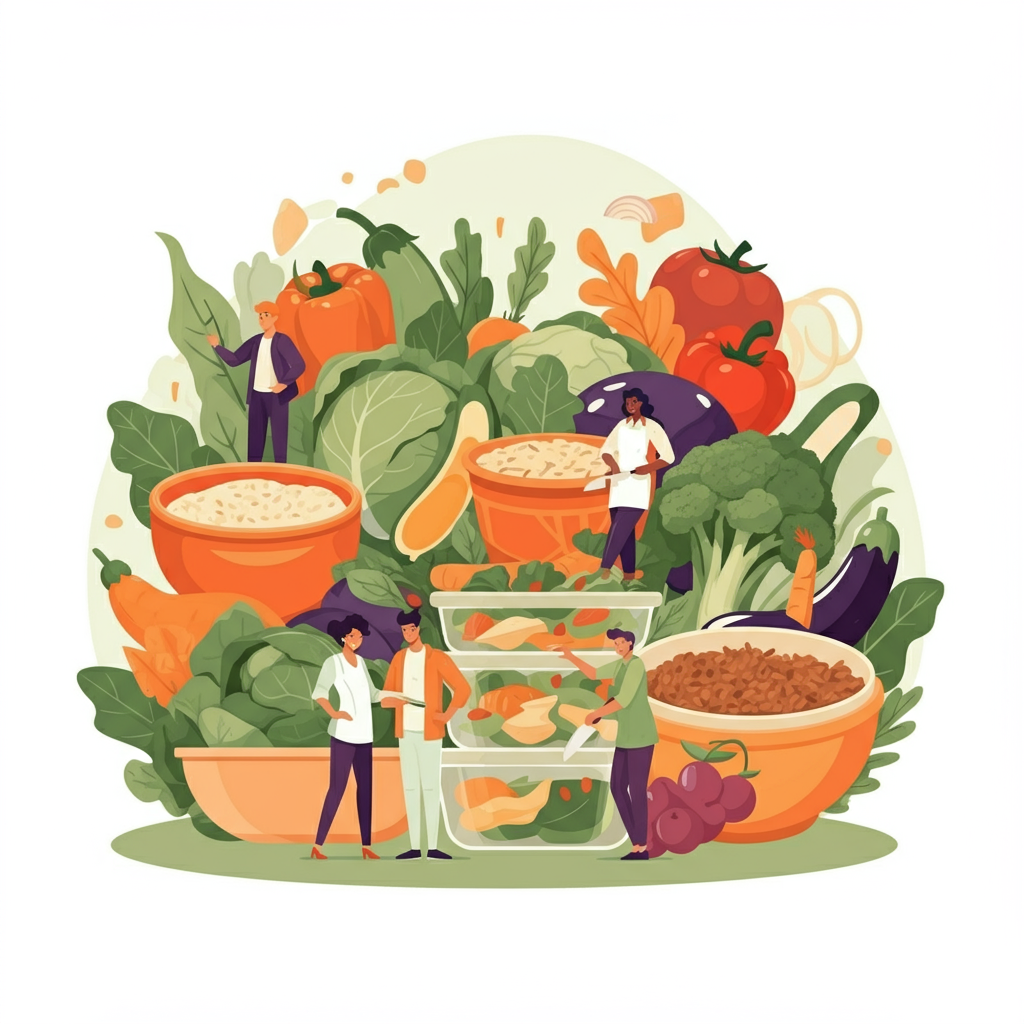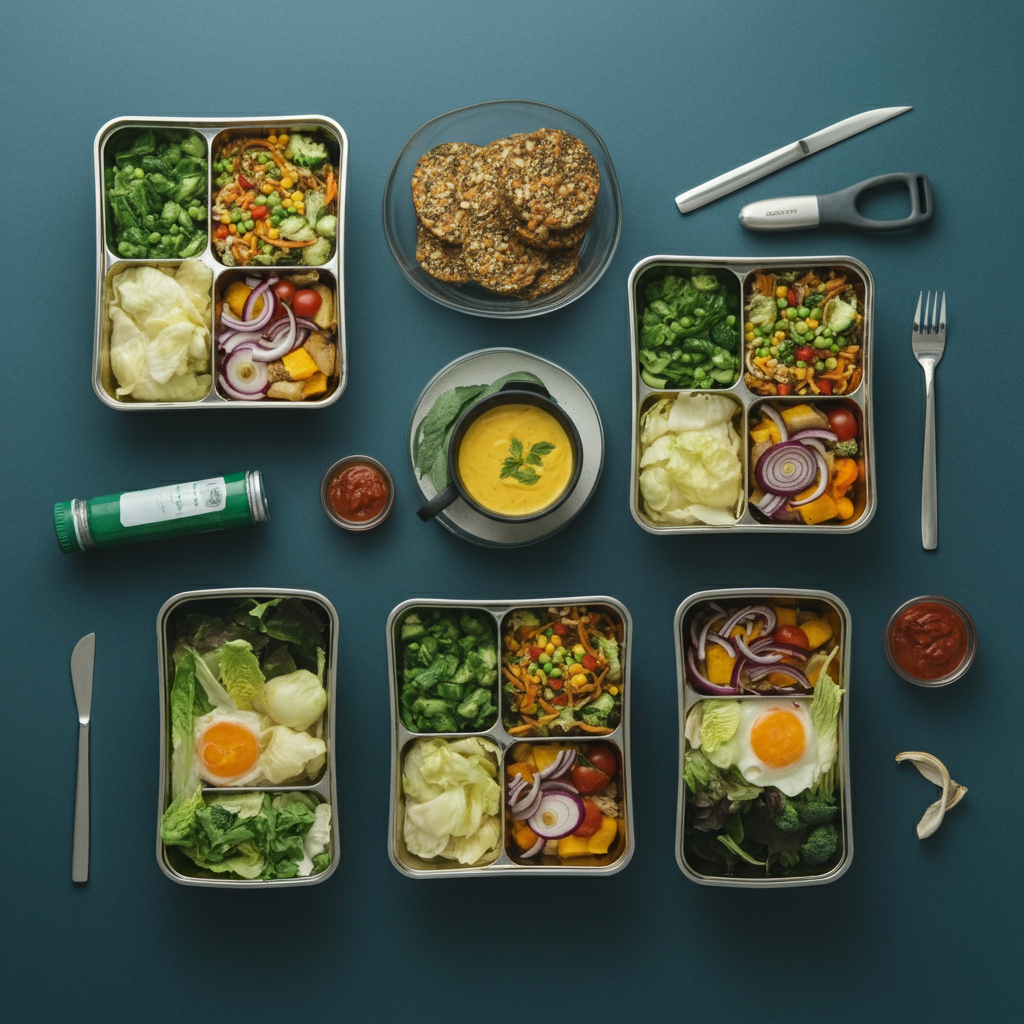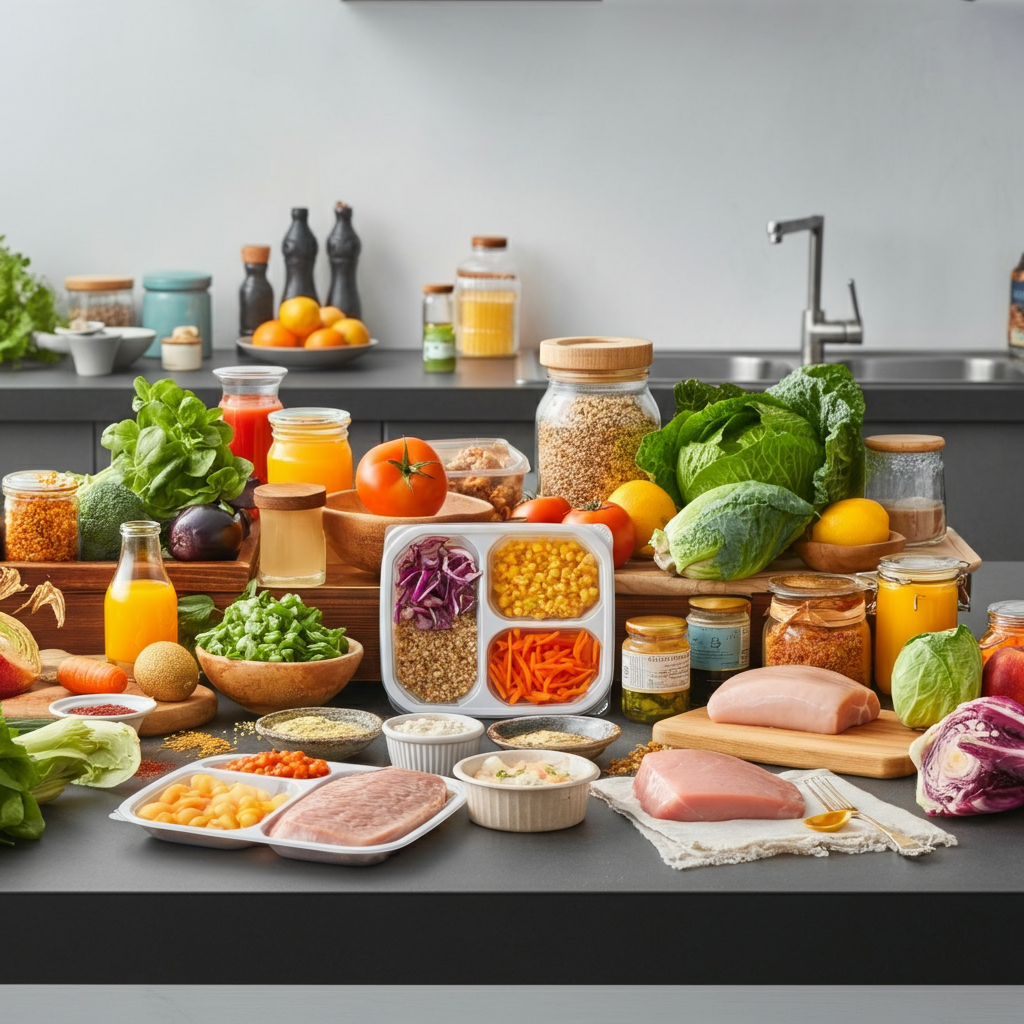
Food costs are climbing, and many families find themselves spending more than they’d like on groceries each month. But what if you could cut your food expenses by up to 40% while eating healthier, home-cooked meals? Budget-friendly meal prep for the week isn’t just a trend—it’s a practical solution that transforms how you approach cooking and eating.
This comprehensive guide will walk you through every aspect of budget-conscious meal preparation, from setting your food budget to storing your prepared meals. You’ll discover proven strategies for shopping smart, cooking efficiently, and creating delicious meals that won’t break the bank. Whether you’re a busy parent, college student, or working professional, these techniques will help you take control of your food costs while maintaining a nutritious diet.
Understanding Your Budget
Before diving into meal prep, you need a clear picture of your current food spending. Most people underestimate how much they spend on groceries, takeout, and dining out. Start by tracking every food purchase for one week—include that morning coffee, lunch at work, and evening snacks.
Once you have real numbers, you can set a realistic weekly meal prep budget. Financial experts recommend spending 10-15% of your income on food, but this varies based on your location and family size. A good starting point is to aim for 20-30% less than your current food spending.
Look for cost-saving opportunities by analyzing your spending patterns. You might discover you’re buying expensive pre-packaged foods when bulk items cost half the price. Seasonal produce offers another avenue for savings—strawberries in summer cost significantly less than in winter.
Planning Your Meals

Success starts with a solid plan. Choose one day each week as your meal prep day—Sunday works well for most people since it sets you up for the upcoming week. Block out 2-3 hours for shopping, cooking, and portioning your meals.
Create a weekly meal plan that balances your budget with nutritional needs. Start with three meals per day and healthy snacks. Write down every ingredient you’ll need, then check your pantry to avoid buying duplicates. This simple step prevents impulse purchases and ensures you use what you buy.
Your shopping list becomes your roadmap to staying within budget. Organize it by store sections to make shopping more efficient. Include quantities and estimated costs to track your spending as you shop.
Smart Shopping Strategies
Where you shop matters as much as what you buy. Discount grocery stores like Aldi or regional chains often offer the same products at 20-40% less than major supermarkets. Farmers’ markets provide fresh, seasonal produce at competitive prices, especially near closing time when vendors offer deals.
Bulk buying works exceptionally well for non-perishable staples. Rice, beans, oats, and pasta keep for months and cost significantly less per serving when bought in larger quantities. A 20-pound bag of rice might seem expensive upfront, but it provides dozens of meals at pennies per serving.
Don’t overlook digital coupons and store loyalty programs. Many grocery stores offer app-based coupons that automatically apply at checkout. Price-matching policies at stores like Walmart can save additional money if you find lower prices elsewhere.
Always compare unit prices rather than package prices. A larger container often costs less per ounce, but not always. Store brands typically offer 25-30% savings compared to name brands for similar quality.
Breakfast Recipe Ideas
Overnight oats provide a nutritious, filling breakfast that costs less than $1 per serving. Combine 1/2 cup rolled oats with 1/2 cup milk, 1 tablespoon chia seeds, and your choice of toppings. Prepare five jars on Sunday for the entire week.
Breakfast burritos freeze beautifully and reheat quickly. Scramble a dozen eggs with vegetables, add cooked beans or leftover meat, and wrap in tortillas. Each burrito costs approximately $1.50 and provides protein to keep you satisfied until lunch.
Homemade granola mixed with yogurt offers another budget-friendly option. Make a large batch using oats, nuts, and a touch of honey. Store in airtight containers and portion with Greek yogurt for a protein-rich start to your day.
Lunch Recipe Ideas
Quinoa salad serves as a complete meal packed with protein and fiber. Cook quinoa in bulk, then mix with seasonal vegetables, beans, and a simple vinaigrette. This meal costs around $2 per serving and provides sustained energy.
Lentil soup stretches your budget while delivering excellent nutrition. Red lentils cook quickly and absorb flavors well. Add vegetables, broth, and spices for a hearty lunch that costs less than $1.50 per bowl.
Mason jar salads keep fresh all week when layered correctly. Place dressing on the bottom, followed by sturdy vegetables, proteins, and greens on top. Shake when ready to eat for a crisp, fresh salad.
Dinner Recipe Ideas
Sheet pan dinners minimize cleanup while maximizing flavor. Roast chicken thighs with seasonal vegetables using olive oil and herbs. This one-pan meal feeds a family of four for under $8 and provides leftovers for lunch.
Pasta with marinara sauce remains a classic budget meal. Make sauce from canned tomatoes, garlic, and herbs. Add vegetables or beans to boost nutrition. Each serving costs approximately $1.25 and satisfies even hearty appetites.
Stir-fries use whatever vegetables are on sale or in season. Cook protein once, then mix with different vegetable combinations throughout the week. Rice or noodles stretch the meal while keeping costs low.
Snack Options
Hard-boiled eggs cost about 25 cents each and provide 6 grams of protein. Prepare a dozen at once and store in the refrigerator for quick snacks throughout the week.
Fresh fruit often costs less than packaged snacks and provides natural energy. Buy what’s in season and on sale. Apples, bananas, and oranges typically offer the best value year-round.
Greek yogurt with a drizzle of honey satisfies sweet cravings while providing probiotics and protein. Buy large containers rather than individual cups to reduce cost per serving.
Preparation and Storage
Batch cooking forms the foundation of efficient meal prep. Cook large quantities of grains, proteins, and roasted vegetables that can be mixed and matched throughout the week. This approach saves time and ensures consistent flavors.
Invest in quality food storage containers that seal properly and stack neatly. Glass containers work well for reheating and don’t retain odors. Label everything with contents and dates to track freshness.
Proper storage techniques extend the life of your prepared meals. Most cooked foods stay fresh for 3-4 days in the refrigerator. Freeze portions you won’t eat within that timeframe to prevent waste.
Tips for Success

Start small to avoid overwhelming yourself. Prep just breakfasts and lunches for your first week, then gradually add dinner preparation as you become comfortable with the process.
Variety prevents boredom and helps you stick to your meal prep routine. Rotate different spice blends, sauces, and cooking methods to keep meals interesting. Mediterranean flavors one week, Asian-inspired the next.
Stay flexible and adjust your plan based on what works. If you discover you don’t enjoy certain combinations, modify recipes or try new approaches. The best meal prep system is one you’ll actually use.
Involve family members in the process. Children can wash vegetables, measure ingredients, or help with simple tasks. This teaches valuable life skills while making meal prep more enjoyable.
Common Mistakes to Avoid
Poor planning leads to overspending and food waste. Always shop with a list and stick to it. Impulse purchases quickly blow your budget and often result in unused ingredients.
Buying too much food, even on sale, wastes money if it spoils before you use it. Calculate realistic portions and adjust recipes to match your household’s eating patterns.
Inadequate storage containers or techniques cause food to spoil quickly. Invest in proper storage solutions and learn how different foods should be stored for maximum freshness.
Lack of variety causes meal prep burnout. If you’re tired of eating the same meals, you’re more likely to order takeout or abandon meal prep entirely. Keep a rotation of favorite recipes to maintain interest.
Tools and Resources
Meal planning apps like Mealime or PlateJoy help organize recipes and generate shopping lists. Many offer budget-tracking features and nutritional information to support your goals.
Online recipe databases provide endless inspiration for budget-friendly meals. Websites like Budget Bytes focus specifically on affordable recipes with detailed cost breakdowns.
Budgeting tools help track your food spending and identify areas for improvement. Simple spreadsheets work well, or use apps like Mint or YNAB for more detailed tracking.
Transform Your Kitchen and Your Budget

Budget-friendly meal prep for the week offers a sustainable path to healthier eating and significant savings. By planning strategically, shopping smart, and preparing efficiently, you can reduce food costs while improving your diet. The initial time investment pays dividends through reduced daily decision-making and consistent, nutritious meals.
Remember that meal prep is a skill that improves with practice. Start with simple recipes and gradually expand your repertoire as you become more comfortable with the process. The money you save and the health benefits you gain make every minute spent meal prepping worthwhile.
Take action this week by choosing three simple recipes from this guide. Plan your shopping trip, prep your meals, and experience the satisfaction of opening your refrigerator to find ready-to-eat, budget-friendly meals waiting for you.
FAQ
What is meal prep?
Meal prep involves planning, shopping for, and preparing meals in advance, typically for an entire week. This practice saves time, money, and helps maintain consistent healthy eating habits.
Is meal prep healthy?
Yes, meal prep can be very healthy when you focus on balanced nutrition. You control ingredients, portions, and cooking methods, often resulting in more nutritious meals than restaurant or processed foods.
How much does meal prep cost?
Meal prep costs vary by location and food choices, but most people spend $30-60 per week for breakfast, lunch, and dinner. This typically represents 20-40% savings compared to buying meals individually.
How long do prepared meals last?
Most prepared meals stay fresh for 3-4 days in the refrigerator. Some items like cooked grains or roasted vegetables can last up to 5 days. Freeze portions for longer storage.
Can I meal prep with dietary restrictions?
Absolutely. Meal prep works well for vegetarian, vegan, gluten-free, and other dietary needs. Focus on whole foods and simple seasonings to accommodate most restrictions.
People Also Ask
What are some easy meals to meal prep for the week?
Easy meal prep options include overnight oats, sheet pan dinners, grain bowls, soups, and stir-fries. These recipes use simple ingredients, reheat well, and provide balanced nutrition.
How can I make meal prep more affordable?
Shop sales and seasonal produce, buy in bulk, use store brands, and focus on inexpensive proteins like beans,